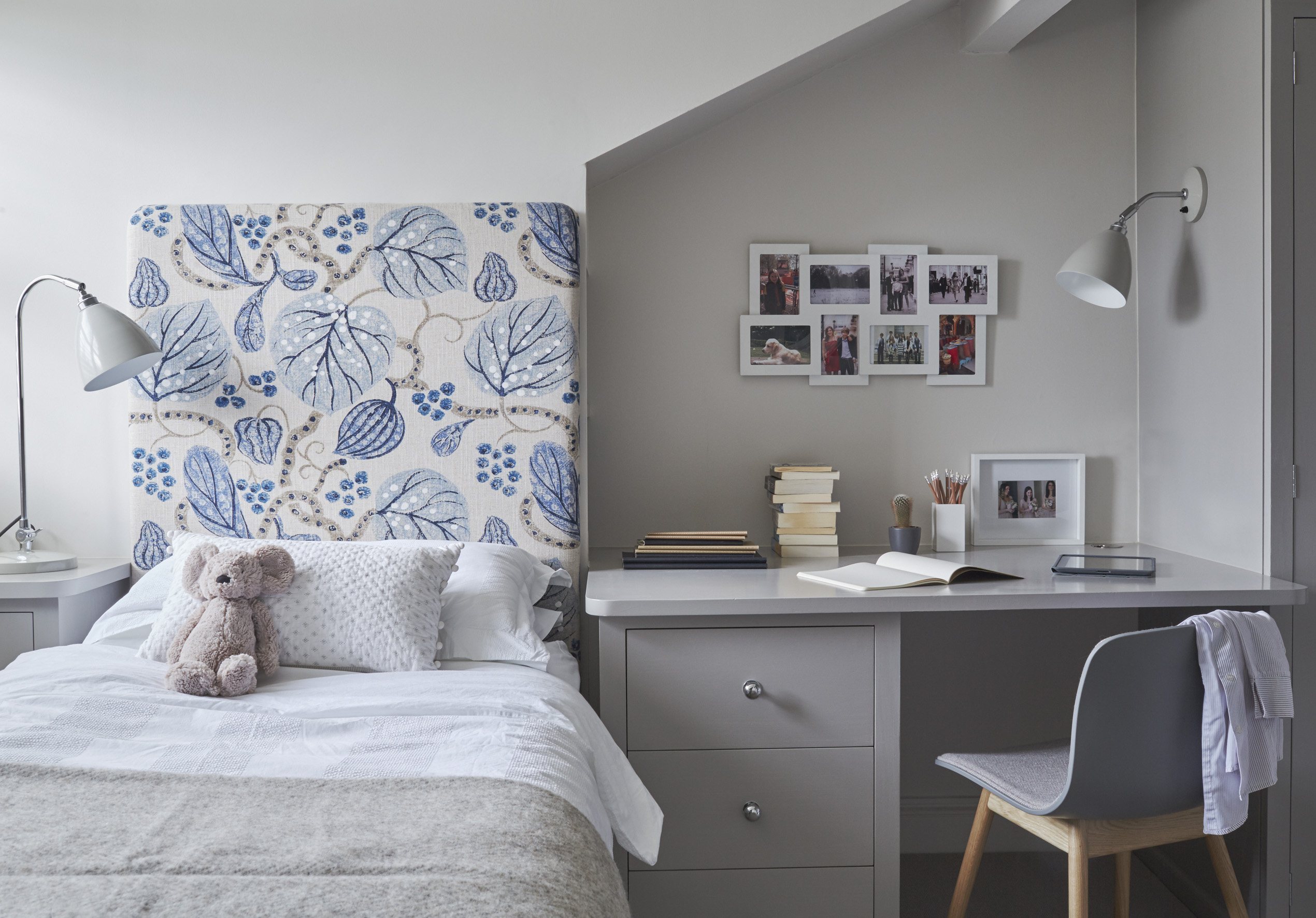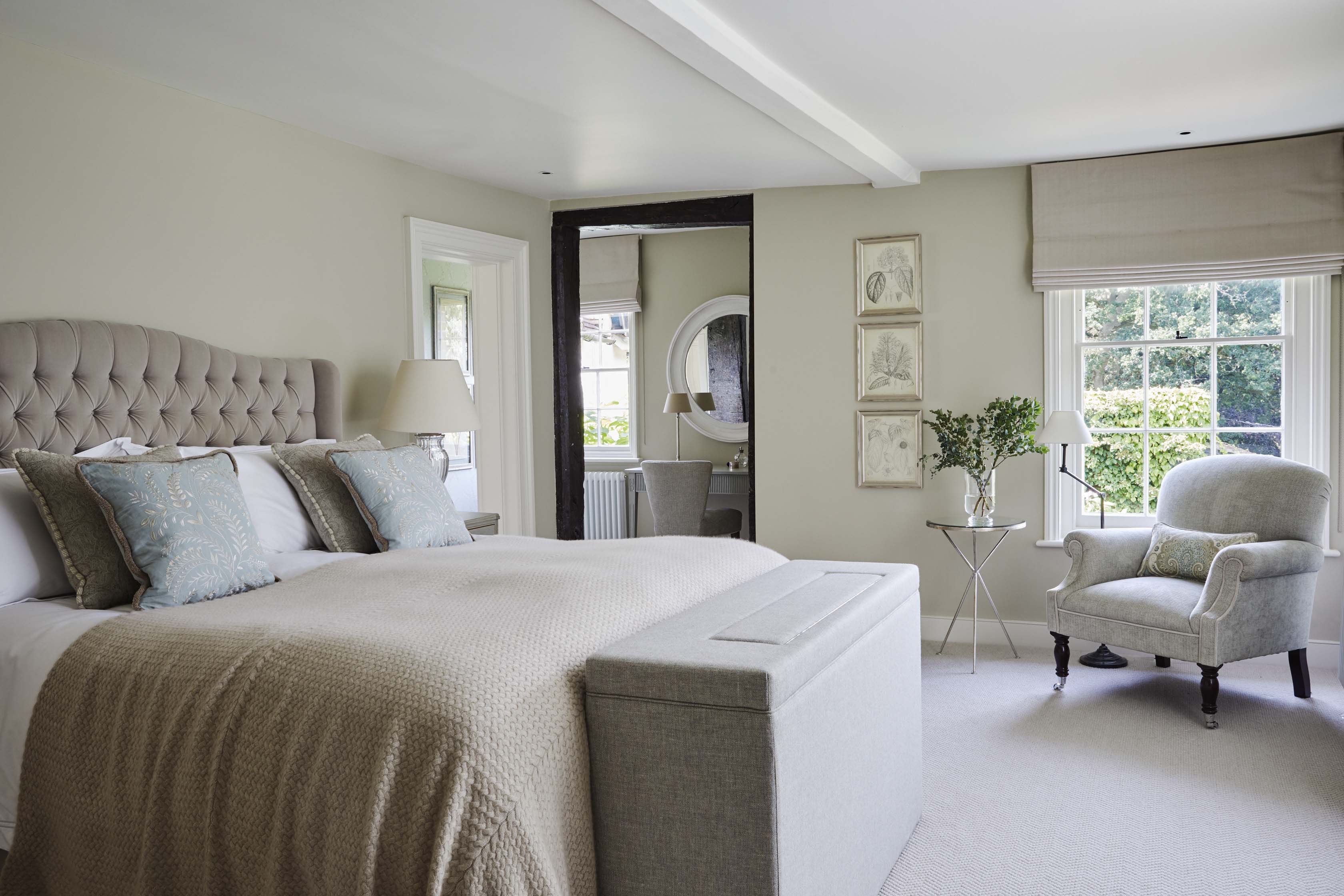Designing children's bedrooms – 12 top tips for a timeless space
When designing kids' bedrooms, you need to think 'future-proofing' at every step. Here's how to get it right


Designing kids' bedrooms can be a decorative trap – we're often persuaded by children's current obsessions with colors, cartoon heroes and sports teams to theme their bedrooms in a way that might well have dated before you have even added the finishing touches.
So when considering kids' room ideas, how do you create a scheme that's both pleasing to them but has longevity, both practically and decoratively? The secret is to create a timeless space that might not see them from nursery to university, but will certainly be pleasing and enduring to both your children and you.
At Sims Hilditch we are often asked to design interiors for young families. This has a bearing on our design decisions for a number of reasons, including: accessibility, storage and safety. Here are a few key things to consider if you are planning to redesign your child’s bedroom in the family home.

Founded in 2009, the Sims Hilditch design practice has become one of the most trusted and respected in the industry. Its couture approach combines interior architecture, interior design and procurement management within one concept-to-completion, fully bespoke service. Creative Founder, Emma Sims-Hilditch is passionate about her belief that good design can transform not only how people live but also how they feel. By creating characterful, beautiful and intelligent interiors, Emma and the Sims Hilditch team empowers clients to radically improve the quality of their lives.
Designing kids' bedrooms
Whether you are looking for bedroom ideas for girls, boys' bedroom ideas or bedroom ideas for teenagers, these tips for designing kids' bedrooms apply.
1. Forward plan

To create a space that will easily evolve over time, we recommend planning where the socket outlets in a child’s bedroom will be positioned early on in the design process. Where there is a cot now, there will soon be a bed in need of a reading light, or even a desk with a table lamp. An interior designer or lighting specialist will be able to assist you with this.
2. Think: Cleanability

While wallpaper is a beautiful addition to a child’s room, it can quickly start to become scruffy when covered in sticky fingerprints. Wipeable paints by Farrow and Ball are a great solution here and are available in glossy and chalky finishes. Tongue and groove is also a great alternative.
3. Protect furniture

To avoid damage from smudges or spillages on armchairs, rugs, curtains and other soft furnishings, we recommend having the fabrics stain guarded. This is something that we do for our clients, however stain guard products can also be bought online.
Design expertise in your inbox – from inspiring decorating ideas and beautiful celebrity homes to practical gardening advice and shopping round-ups.
4. Keep things fun

While it is important to keep the design practical in a child’s bedroom, it is important to thread elements of fun throughout the design. Patterned lamps and cushions by Fermoie work really well here. They come in a variety of colorways that can easily be switched out as the child grows older and their tastes change.
5. Consider the design of the rest of your home

Children's bedroom design can jar when it contrasts strongly with your home's decor as a whole.
When designing kids' bedrooms, it can be hard to strike the right balance between playful and timeless. A great place to start is to consider the design of the rest of the home, and make sure this room is in keeping throughout.
This might include color palette, materials used and textures. From here, you can start to build a welcoming and fun bedroom for your child that will stand the test of time.
6. Avoid trends when designing kids' bedrooms

Considering children's bedroom wallpaper ideas or kids' room paint ideas? Think subtle.
Where possible, we recommend avoiding covering your child’s bedroom in heavily themed décor that is difficult to change. Instead, why not opt for lightly patterned wallpaper which will act as a neutral and characterful backdrop to the space?
Designs such as sail boats, florals and even aeroplanes work equally well.
7. Less is more for a restful space

This mantra applies particularly when you are looking at shared bedroom ideas, for small bedroom ideas for kids or for children who need a calm, restful space at the end of the day. Equally, if you have a playroom, it makes sense to keep your child's bedroom free of clutter – from toys to schoolwork – if you can. This will allow you to design a child's bedroom that's just about sleep and rest – or quiet reading.
8. Switch out soft furnishings

Scatter cushions, throws and bedding are easily updated as your child gets older and their tastes change, keeping the fundamental essence of the room in harmony with the rest of the home.
Artwork is also a nice way to bring character to the space. A younger child might prefer colorful pictures with plenty of texture, whereas a teenager might opt for posters and more neutral artwork and photographs.
9. Consider a work space

When it comes to lighting it is important to incorporate a desk lamp into the space. This encourages your child to enjoy reading independently. You might also consider installing a reading space within bespoke joinery. This can be easily updated into a desk to complete school work and pursue hobbies as the child gets older.
A wicker basket or small set of bookshelves is a practical and attractive way to store books, school items and arts and crafts, making it easy for your child or teenager to access.
10. Make it a retreat

Bringing the same principles to designing kids' bedrooms as you do to designing your own bedroom will ensure their room is just as much as a retreat as yours. So while you might be focussed on keeping it uncluttered, you should also consider mood lighting – table lamps are perfect – and layering, such as quilts and cushions. The idea is that they will be drawn to their bedrooms to unwind.
11. Maximize floor space

Loft bed ideas are a must in a small bedroom, but even if it's not a shared space, consider them for children who love to host sleepovers regularly. Of course, you can also leave space beneath the lofted bed for a study or reading space – this is a wonderful way to maximize square footage.
12. Make the most of storage

When designing kids' bedrooms, prioritize bedroom storage ideas that will grow with them. This includes closets with adjustable shelving and hanging spaces, drawer space beneath the bed, and plenty of shelving, plus of course, toy storage ideas. When they are young, shelving in particular can host, for example, toys, games and makes; as they grow older, it can make way for books, schoolwork and gaming equipment.
For those considering an ottoman in a younger child’s bedroom, we recommend an upholstered design. Not only does this avoid unnecessary sharp edges that could cause injury to a child, but it can double up as valuable storage space to keep toys, games or clothes. And it will be useful as they grow. Other low level storage such as open pigeon holes filled with baskets work well in a child’s room, keeping things safe and accessible.
Where should a bed be placed in a child's bedroom?
Where a bed is placed in a child's bedroom is generally on the focal wall – typically the one opposite the door to the bedroom itself. You needn't push a child's bed into a corner – although this is the best way to maximize floor space. Instead, a child's bed can be placed centrally on the focal wall to make it accessible on both sides. This can also allow you to place storage units around the bed.
How do you make a kid's room cozy?
To make a kid's room cozy, it's important to furnish it like you would any other living or sleep space in your home – with layers. Layers can of course include quilts, cushions, blankets and throws, but it's important to add comfort underfoot with rugs, too. And don't dismiss bedroom lighting ideas – these can add layers of light that can be very inviting and practical, too. Choose warm-colored bulbs and a kids' room will become quickly cozy.

Founded in 2009, the Sims Hilditch design practice has become one of the most trusted and respected in the industry. Its couture approach combines interior architecture, interior design and procurement management within one concept-to-completion, fully bespoke service. Creative Founder, Emma Sims-Hilditch is passionate about her belief that good design can transform not only how people live but also how they feel.